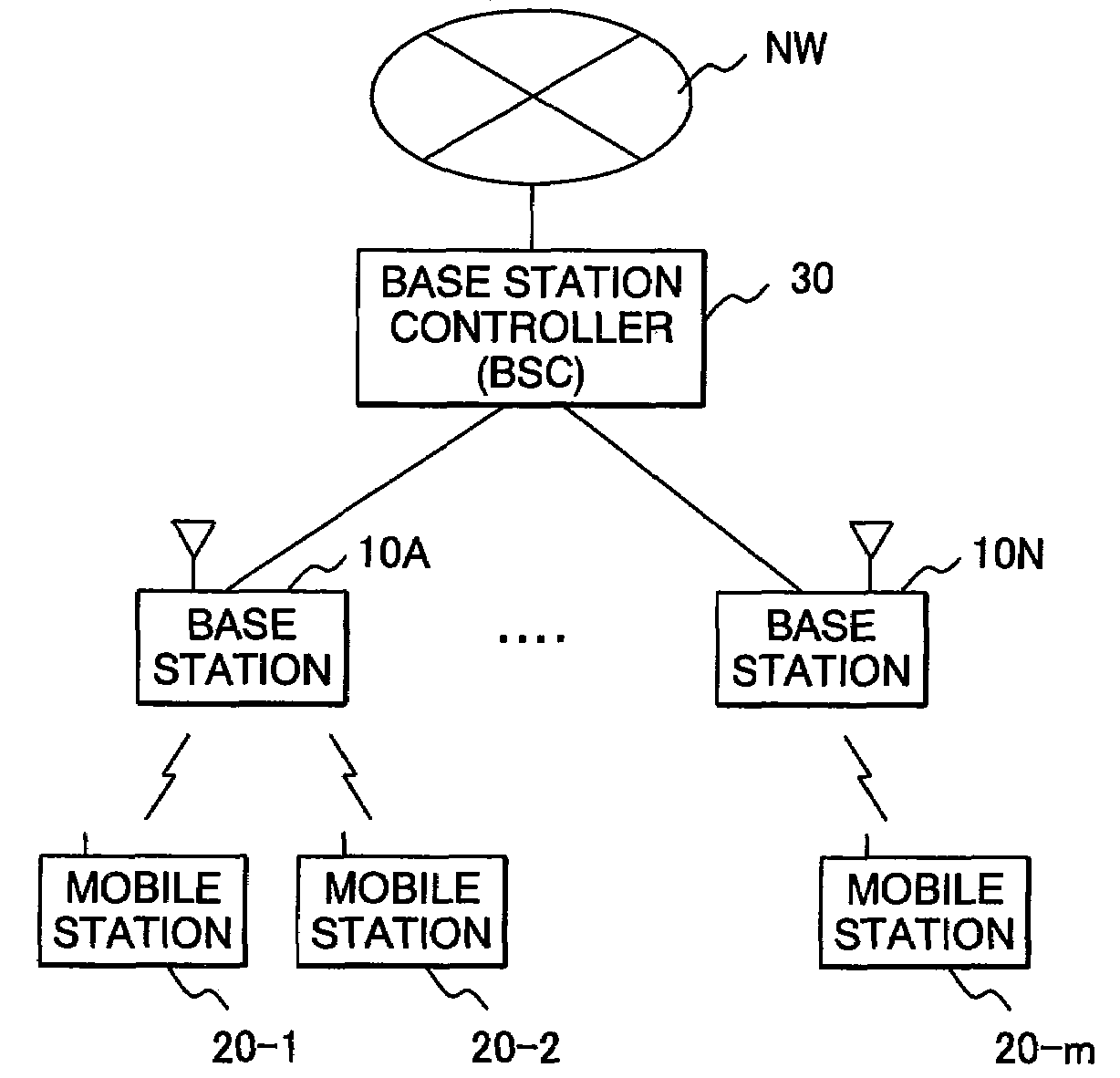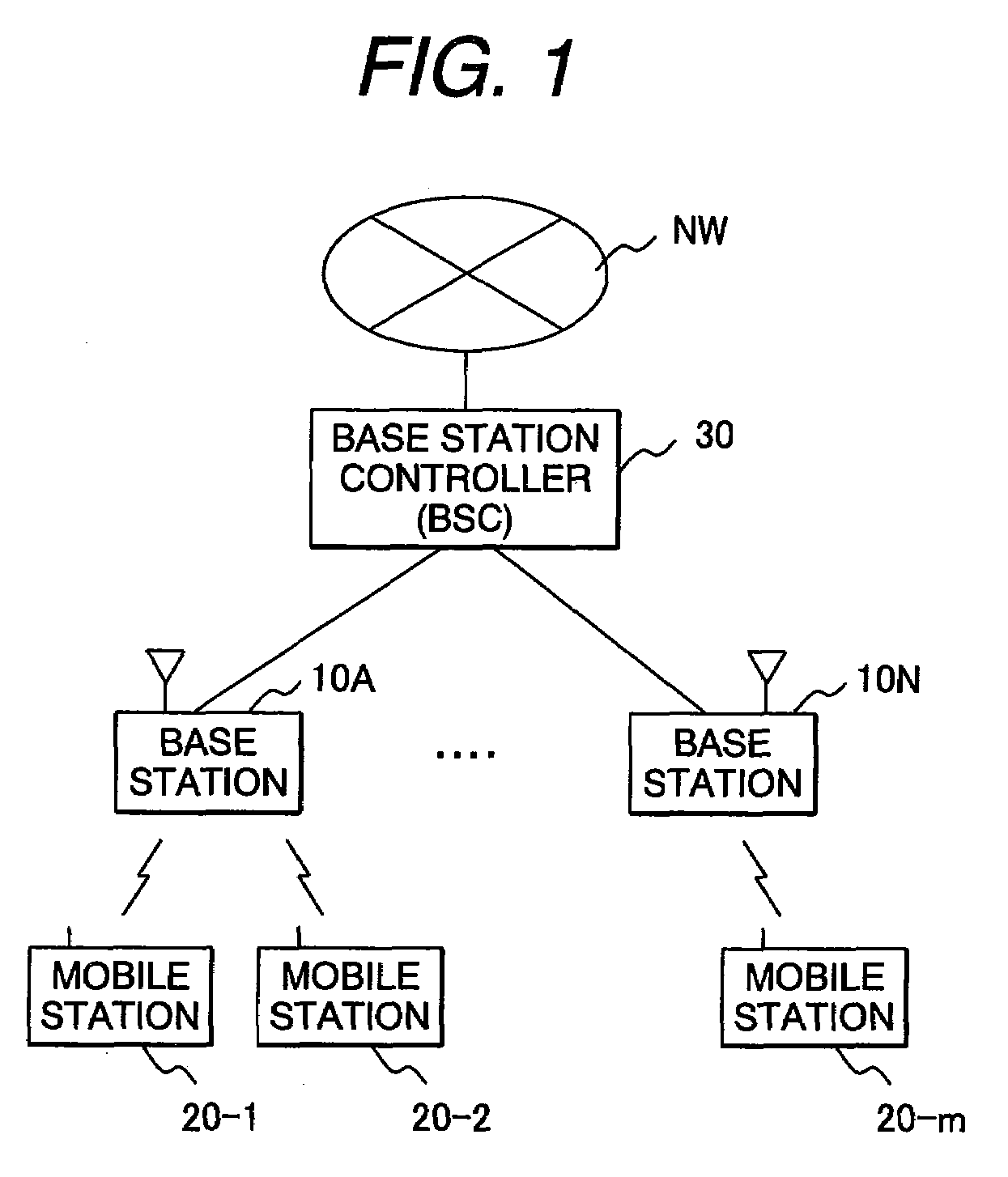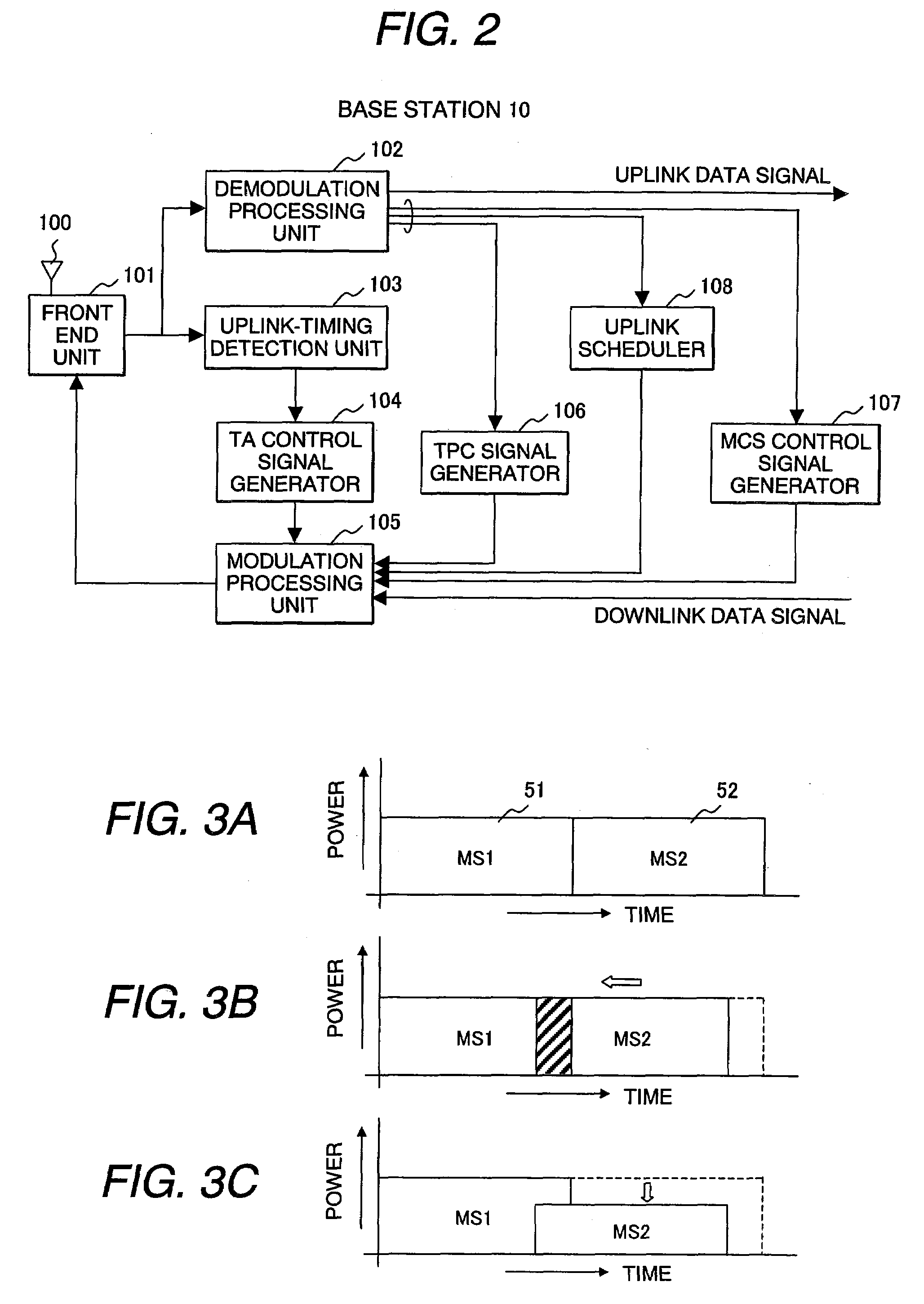Base station and mobile station for ofdma cellular system
a mobile station and cellular radio technology, applied in frequency-division multiplex, synchronisation arrangement, instruments, etc., can solve the problems of inter-symbol interference between adjacent time segments in the same frequency band, mobile stations cannot adjust transmission timing promptly, etc., to improve the robustness of communication maintenance of mobile stations and reduce signal interference
- Summary
- Abstract
- Description
- Claims
- Application Information
AI Technical Summary
Benefits of technology
Problems solved by technology
Method used
Image
Examples
first embodiment
[0071]FIG. 5 shows the configuration of a radio transmission / reception unit for the base station 10 applied to the first embodiment of the invention. In FIG. 5, the uplink scheduler 108 is not shown for simplicity.
[0072]In the first embodiment, the base station 10 is provided with a timing-out detector 110 having a buffer memory for storing a timing gap, between the uplink-timing detection unit 103 and a TPC signal generator 106A.
[0073]The gap between the uplink signal reception timing and the reference timing of the base station is inputted to the timing-out detector 110 from the uplink-timing detection unit 103. When the timing gap is inputted from the uplink-timing detection unit 103, the timing-out detector 110 determines the presence or absence of TA-range-out by a procedure shown in FIG. 6. Upon detecting the TA-range-out, the timing-out detector 110 turns on a TA-range-out indication signal to be supplied to the TPC signal generator 106A.
[0074]That is, the timing-out detector...
second embodiment
[0085]FIG. 9 shows the configuration of a radio transmission / reception unit for the base station 10 applied to the second embodiment of the invention.
[0086]In the second embodiment, the TA-range-out indication signal generated by the timing-out detector 110 is outputted to a TA-range-out notification signal generator 111. The TA-range-out notification signal generator 111 generates a TA-range-out notification signal according to the status of the TA-range-out indication signal, and outputs it to a modulation processing unit 105B.
[0087]The modulation processing unit 105B multiplexes the TA-range-out notification signal with the downlink data outputted from the control unit and control signals from the TA control signal generator 104, the TPC signal generator 106, the MCS control signal generator 107, and the uplink scheduler 108, and converts the multiplexed signals into a downlink baseband OFDM signal to output it to the front end unit 101.
[0088]FIG. 10 shows the configuration of a ...
third embodiment
[0092]FIG. 12 shows the configuration of a radio transmission / reception unit for the mobile station 20 applied to the third embodiment of the invention.
[0093]In the third embodiment, the mobile station 20 is provided with the function of detecting TA-range-out. When the TA-range-out is detected, the mobile station 20 transmits a TA-range-out notification signal to the base station 10. Upon receiving the TA-range-out notification signal from the mobile station, the base station 10 generates a TPC signal for minimizing the transmission power and controls the transmission power of the mobile station.
[0094]As shown in FIG. 12, the mobile station 20 of the third embodiment is provided with a timing-out detector 220 to which a reception timing adjustment signal is inputted from the downlink-timing detector203, and a TA-range-out notification signal generator 221 connected between the timing-out detector 220 and a modulation processing unit 205C.
[0095]The timing-out detector 220 includes a...
PUM
 Login to View More
Login to View More Abstract
Description
Claims
Application Information
 Login to View More
Login to View More - R&D
- Intellectual Property
- Life Sciences
- Materials
- Tech Scout
- Unparalleled Data Quality
- Higher Quality Content
- 60% Fewer Hallucinations
Browse by: Latest US Patents, China's latest patents, Technical Efficacy Thesaurus, Application Domain, Technology Topic, Popular Technical Reports.
© 2025 PatSnap. All rights reserved.Legal|Privacy policy|Modern Slavery Act Transparency Statement|Sitemap|About US| Contact US: help@patsnap.com



